What's New
Displaying results 3081 - 3090 of 4052
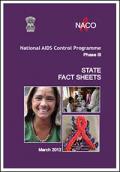
Resource | Fact Sheets,
The adult HIV prevalence at national level has continued its steady decline from 0.41% in 2000 through 0.36% in 2006 to 0.31% in 2009. All the six high prevalence states show declining trend. However, the low prevalence states of Assam, Chandigarh, Orissa, Kerala, Jharkhand, Uttarakhand, Jammu & Kashmir, Arunachal Pradesh and Meghalaya show rising trends in the last four years.
New HIV infections has declined by more than 50% over the past decade from 2.7 lakh in 2000 to 1.2 lakh in 2009. Of these, six high prevalence states account for only 39%, while the states of Orissa, Bihar, West Bengal, Uttar Pradesh, Rajasthan, Madhya Pradesh and Gujarat together account for 41% of new infections.
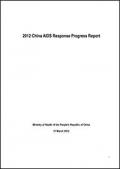
Resource | Publications,
In accordance with the requirements set out in the 2012 Global AIDS Progress Report Preparation Guidelines (hereafter referred to as the Guidelines), the Ministry of Health assumed responsibility for organization and preparation of the China 2012 AIDS Response Progress Report (hereafter referred to as the Progress Report), as well as mobilization and coordination of participation of various stakeholders. Representatives from relevant government departments, civil society organizations (CSOs) and people living with HIV (PLHIV) actively participated in the report preparation.
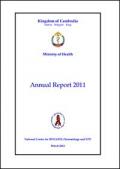
Resource | Publications,
This report describes the achievement of program implementation on HIV/AIDS and STI prevention, care, support and treatment during the year 2011. The report is intended to aggregate data and information collected from all OI/ART, VCCT, Family Health Clinics, HBC, and PMTCT sites from the whole country to be represented as the National Comprehensive Report for the health sector response to HIV/AIDS and STI in Cambodia. The following sections reported the main three program areas implemented for this year that are including: A) General Report related to Programme management and implementation; B) Results from health service deliveries; C) Financial Report for descript the financial disbursements against the yearly budget plan; D) Procurement of OI/ARV Drugs, E) Challenges etc.
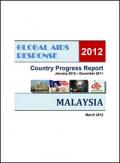
Resource | Publications,
The preparation of country report had begun as early as December 2011. Under the leadership of Ministry of Health Malaysia, series of consultations were convened involving various stakeholders to capture as much of opinions and responses to HIV. Apart from Ministry of Health officials especially from HIV/STI Section, others involved were government ministries and departments, non-government organizations (NGO), civil society, bilateral and international agencies, clinicians and academia.
The first in-country consultative meeting was convened in 15 February 2012 where orientation of report was briefed and indicators were agreed upon. During the meeting, stakeholders were also informed about newly added indicators for 2012 reporting. Good practices were identified and agreed to be included and highlighted in the report. The challenges and remedial actions were also determined in the same manner.
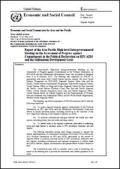
Resource | Publications,
The Asia-Pacific High-level Intergovernmental Meeting on the Assessment of Progress against Commitments in the Political Declaration on HIV/AIDS and the Millennium Development Goals was convened in Bangkok from 6 to 8 February 2012.
The Meeting was held in pursuance of ESCAP resolution 66/10 with the following objectives:
(a) To assess regional progress against commitments in the Political Declaration on HIV and AIDS and the Millennium Development Goals and efforts to ensure universal access, including follow-up to the outcome of the 2011 High-level Meeting of the General Assembly on AIDS;
(b) To promote multisectoral dialogue between the health and other sectors, including justice, law and order and drug control;
(c) To identify areas as for regional cooperation, particularly in addressing policy and legal barriers to universal access to HIV prevention, treatment, care and support.
The Meeting identified, among other things, measures to support the further implementation of Commission resolutions 66/10 and 67/9 as well as the 2011 Political Declaration on HIV and AIDS, particularly in the context of regional efforts to promote universal access to HIV prevention, treatment, care and support, including multisectoral and regional cooperation to address legal and policy barriers, stigma, discrimination and gender-based violence related to HIV.
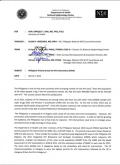
Resource | Fact Sheets,
The Philippines is one of only seven countries with an increasing number of new HIV cases. Since the population of 94 million people is big, if the HIV prevalence reaches 1%, that will mean 940,000 Filipinos will be infected with HIV. The country cannot afford this predicament.
As of 2011, the majority of HIV infections are among males who have sex with other males (MSM), people who inject drugs (IDU) and females in prostitution (FSW) who are also lDU. At the end of 2011, there was an estimated 19,022 adults living with HIV. If this HIV situation continues, the number can rise to 35,941, and the country would not be able to achieve Millennium Development Goal 6.
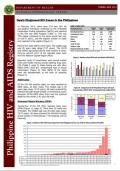
Resource | Fact Sheets,
In February 2012, there were 274 new HIV Ab seropositive individuals confirmed by the STD/AIDS Cooperative Central Laboratory (SACCL) and reported to the HIV and AIDS Registry (Table 1). This was 72% higher compared to the same period last year (n=159 in 2011), and the highest number of cases ever reported in the registry [Figure 1].
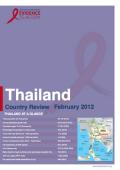
Resource | Reviews and Snapshots,
Thailand was one of the few countries to have demonstrated success in the 1990s in slowing down the spread of the HIV epidemic – largely due to its policy of 100% condom use in the commercial sex industry. Indeed, Thailand has had one of the most effective national responses to the HIV epidemic in the world, particularly in the scale and scope of widespread impact.
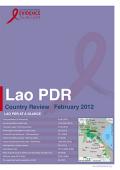
Resource | Reviews and Snapshots,
The first HIV-positive case was reported in the country in 1990 and the first AIDS case in 1992. In 2010, Lao PDR reported 612 HIV cases, 366 AIDS cases and 132 deaths due to AIDS-related illness. Cumulatively since 1992, there have been 2736 AIDS cases and 1170 AIDS-related deaths. Among the reported HIV cases, women made up 45% of the total.
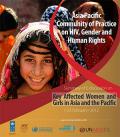
Resource | Publications,
From 1-23 February 2012, the Asia Pacific Community of Practice on HIV, Gender and Human Rights (HIV-APCoP) held an e-discussion on Key Affected Women and Girls in Asia and the Pacific with the primary objective of stimulating dialogue to ensure proper policy attention is paid to key affected women and girls in the context of HIV.





